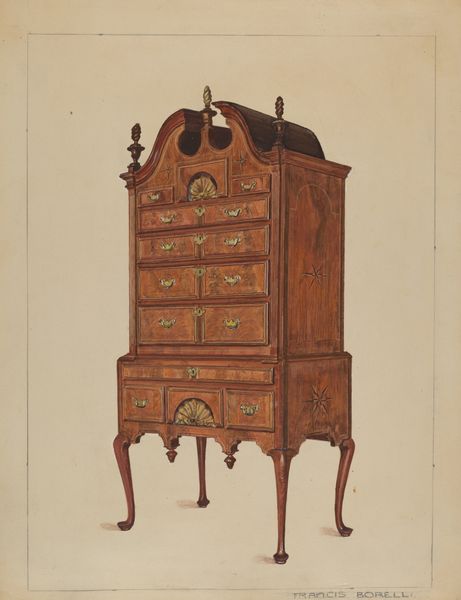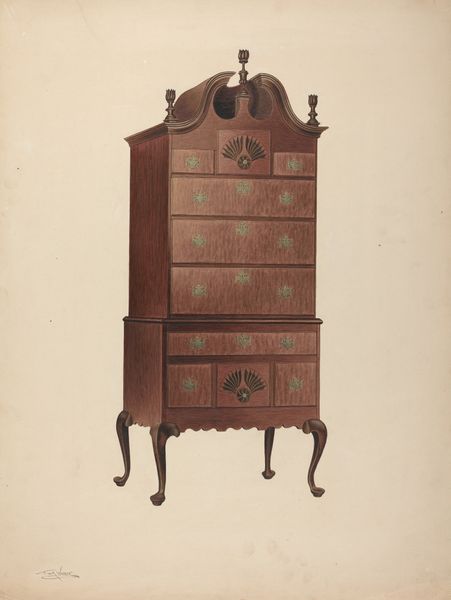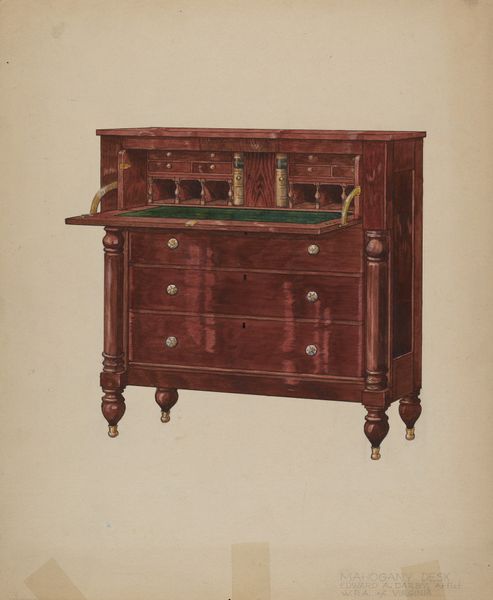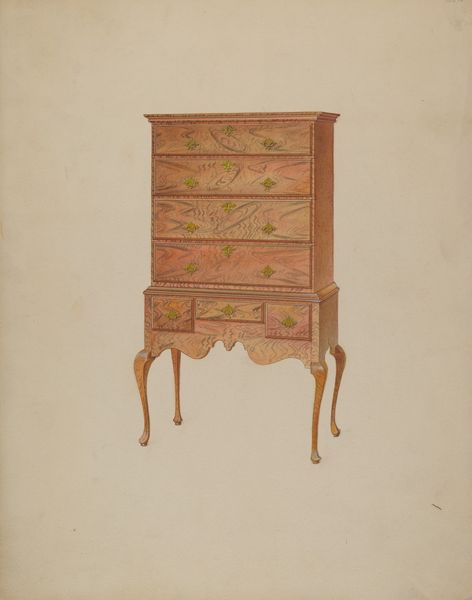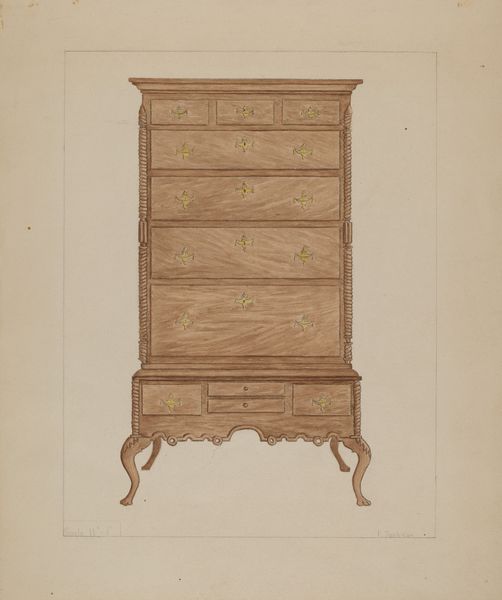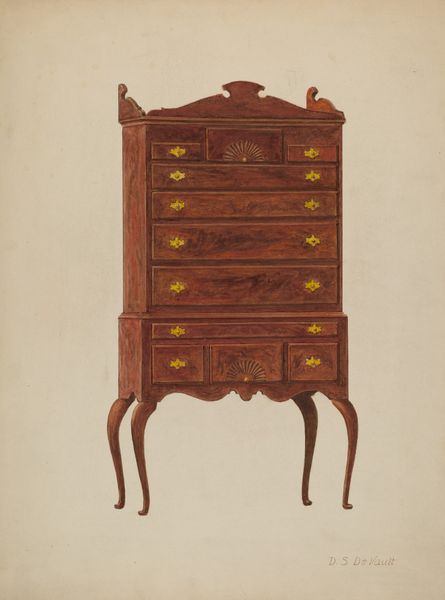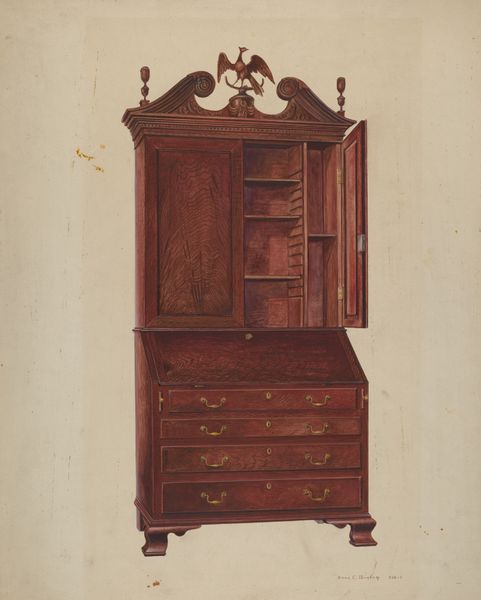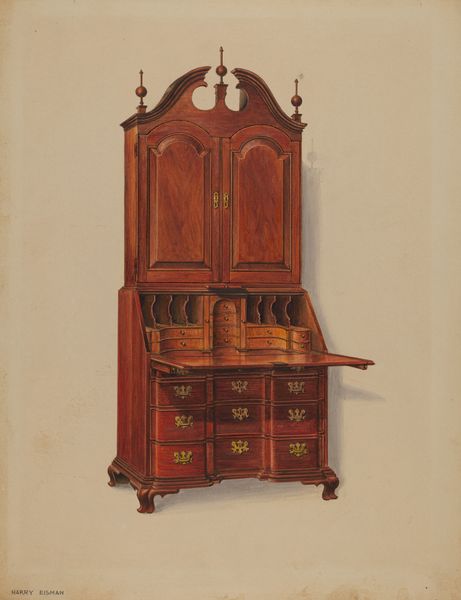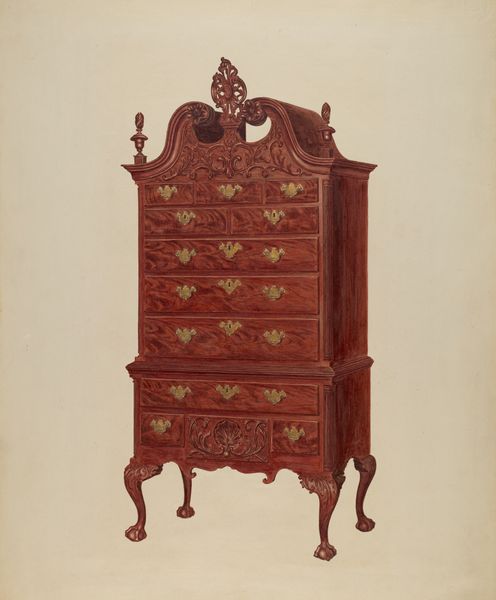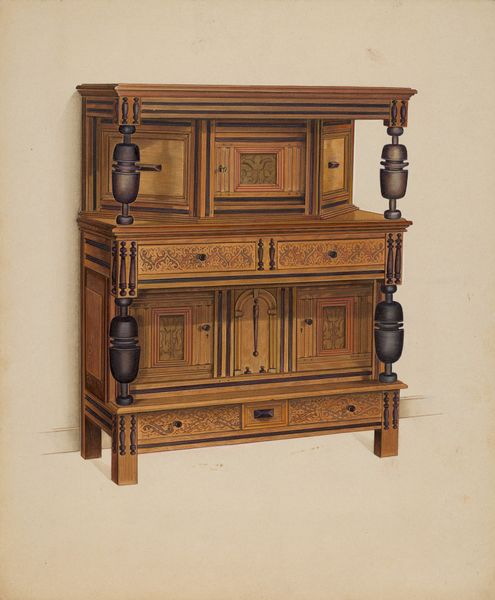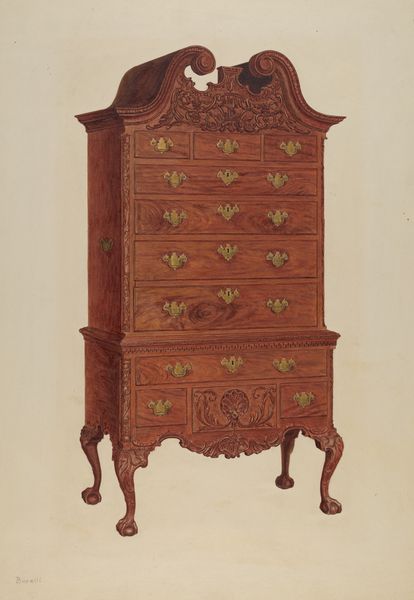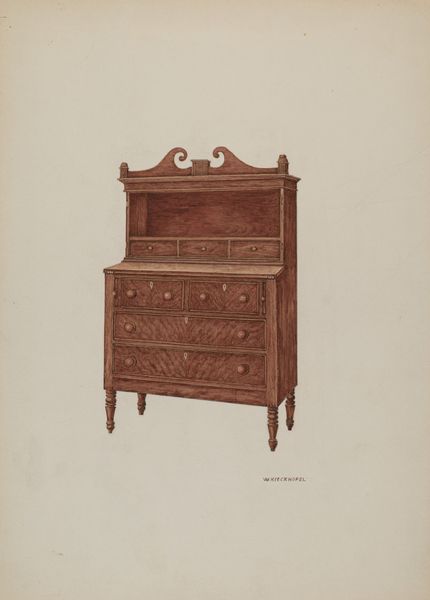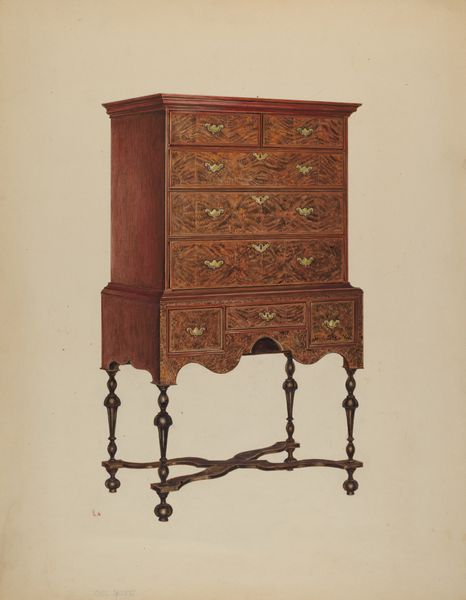
drawing, watercolor
#
drawing
#
water colours
#
watercolor
#
decorative-art
Dimensions: overall: 46 x 38 cm (18 1/8 x 14 15/16 in.) Original IAD Object: 89 1/2"high; 43 3/4"wide; 22"deep
Copyright: National Gallery of Art: CC0 1.0
Editor: This watercolor by Charles Squires from 1936, titled "Highboy", renders the furniture piece with remarkable detail. There's an undeniable elegance in the design, especially with those cabriole legs and shell motifs, but it also feels…slightly removed, like an object carefully observed but not necessarily inhabited. What's your take on its context? Curator: It's fascinating to consider this artwork as an artifact *of* its time, not just a representation of an earlier style. Squires created this drawing in the 1930s, a period of intense interest in American colonial furniture. What do you think that revival might say about the social anxieties of the Depression era? Editor: Perhaps a yearning for simpler times, a sense of established tradition in the face of economic hardship? Almost like finding comfort in the craftsmanship of a past era? Curator: Precisely. This isn’t simply a depiction of a highboy. It's an *interpretation* steeped in the social and political climate of the 1930s. Museums and historical societies were gaining prominence, shaping a specific narrative of American history through objects. Think about whose stories were being amplified by focusing on *this* kind of object during *that* moment. Editor: So it’s about more than just the highboy itself, but what it represents—and who is afforded the privilege of associating with it in this moment? Curator: Exactly! And consider the act of depicting it in watercolor rather than, say, photography. What does that choice signal about the intended audience and purpose of this work? Is it meant for study, appreciation, or perhaps something else entirely? Editor: It brings a new layer of intention that I had not previously considered! I had assumed it was documentation, not necessarily conscious historical promotion. Curator: The power of art lies in its layered meanings, and it certainly changes how I view the work now.
Comments
No comments
Be the first to comment and join the conversation on the ultimate creative platform.
